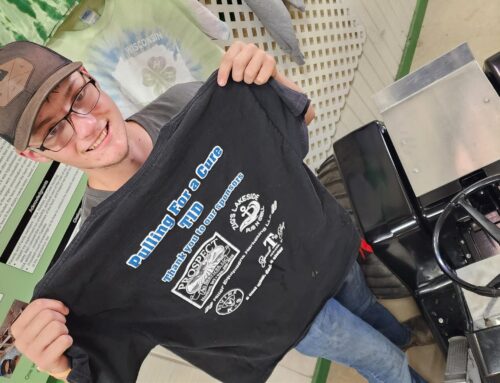For a healthy experience, the importance of proper hand washing at this year’s county fair can’t be overstated, says Pattie Carroll, University of Wisconsin-Extension, Dodge County.
Although one-on-one contact with farm animals serves as a rewarding and educational experience, precautions should be taken to reduce health risks such as E. coli O157:H7 that are sometimes associated with direct animal contact. “Children love to touch animals, but they often don’t wash their hands properly afterwards. Rather than discourage families from enjoying traditional activities such as visits to fairs and petting zoos, we want them to be safe,” Carroll says.
Based on recommendations from the Centers for Disease Control and Prevention (CDC), visitors to county fairs should take simple steps such as washing their hands after touching animals or spending time in areas where animals are housed or exhibited. The following recommendations will help to minimize potential illness:
§ Wash hands with warm, soapy water after visiting animal areas and before eating and handling food. Twenty seconds is the time that it takes to properly wash your hands. Use a disposable towel to dry hands after washing.
§ In areas without running water, hand sanitizer gels may be used, although they may not be effective. Baby wipes are not an accepted sanitizing agent.
§ Wash hands after being in, or touching, any animal interaction area such as cages or stalls.
§ Do not eat, drink, smoke or carry toys or pacifiers into areas of animal contact.
§ Take care to remove all animals from food service areas and infant care settings.
§ Young children, even babies, should be supervised by adults who can ensure that they wash their hands appropriately.
“The easiest way to prevent food-borne illness of any kind is remember to wash your hands thoroughly,” Carroll says.
Proper hand washing is especially important after touching those farm animals that pose a greater risk for transmitting intestinal infections to humans. Such animals include calves, lambs and other young ruminants, young poultry, and animals that are ill. New and more dangerous pathogens have evolved. Some pathogens have adapted to conditions where they would not have survived previously. Others have become more difficult to treat because they have developed resistance to antibiotics. It’s a different world than it used to be and people have to be more careful. Enjoy the fair!





Leave A Comment